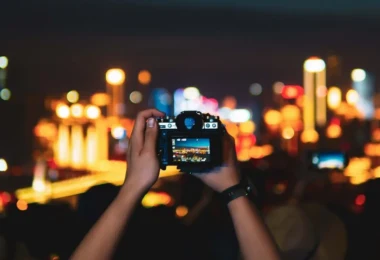In an era where technology permeates every aspect of our lives, the field of legal proceedings is not exempt from its influence. One of the most significant technological advancements influencing this realm is advanced video surveillance. This innovation has revolutionized the way evidence is gathered, presented, and interpreted in legal scenarios, thereby altering the landscape of legal proceedings.
The Evolution of Video Surveillance in Legal Contexts
Historically, the legal system relied heavily on eyewitness accounts and physical evidence. However, the introduction of video surveillance brought a tangible shift. With high-resolution cameras and sophisticated recording techniques, video surveillance now offers a more reliable and unbiased form of evidence. The clarity and precision of modern surveillance technology ensure that the details captured are both accurate and difficult to dispute.
Enhanced Evidentiary Value
The primary impact of advanced video surveillance technology in legal proceedings is the enhanced evidentiary value it provides. This technology can capture incidents in real-time, providing courts with an unaltered record of events. It allows for the scrutiny of details that might otherwise go unnoticed, such as the exact sequence of events, the identification of individuals involved, and the contextual understanding of an incident. This level of detail is invaluable in constructing a comprehensive narrative for legal cases.
Challenges in Admissibility and Privacy Concerns
Despite its benefits, the use of video surveillance in legal proceedings is not without challenges. Questions regarding the admissibility of surveillance footage, particularly when it concerns privacy laws and consent, are increasingly prevalent. Courts must balance the need for reliable evidence with the protection of individual privacy rights. This balance is a delicate one, often requiring intricate legal navigation to ensure that the use of surveillance technology adheres to legal standards and ethical considerations.
Case Studies: The Role of Surveillance in High-Profile Cases
Several high-profile legal cases have demonstrated the pivotal role of video surveillance. In these cases, surveillance footage provided irrefutable evidence that either corroborated or contradicted testimonies, significantly swaying the direction of the proceedings. The objective nature of video evidence in these instances underscored its power in influencing legal outcomes.
The Future of Legal Proceedings and Video Surveillance
Looking ahead, the integration of video surveillance technology in legal proceedings is poised to grow. Innovations such as facial recognition software, motion detection technology, and even “live video monitoring Toronto” are pushing the boundaries of what can be monitored and recorded. These advancements are not only enhancing the capabilities of surveillance technology but are also raising new legal and ethical questions that will need to be addressed.
Conclusion
The impact of advanced video surveillance technology on legal proceedings is profound and multi-faceted. From offering enhanced evidentiary value to posing new legal challenges, this technology has irrevocably changed the landscape of the legal system. As technology continues to evolve, so too will its role in legal proceedings, presenting both opportunities and challenges for the justice system.














